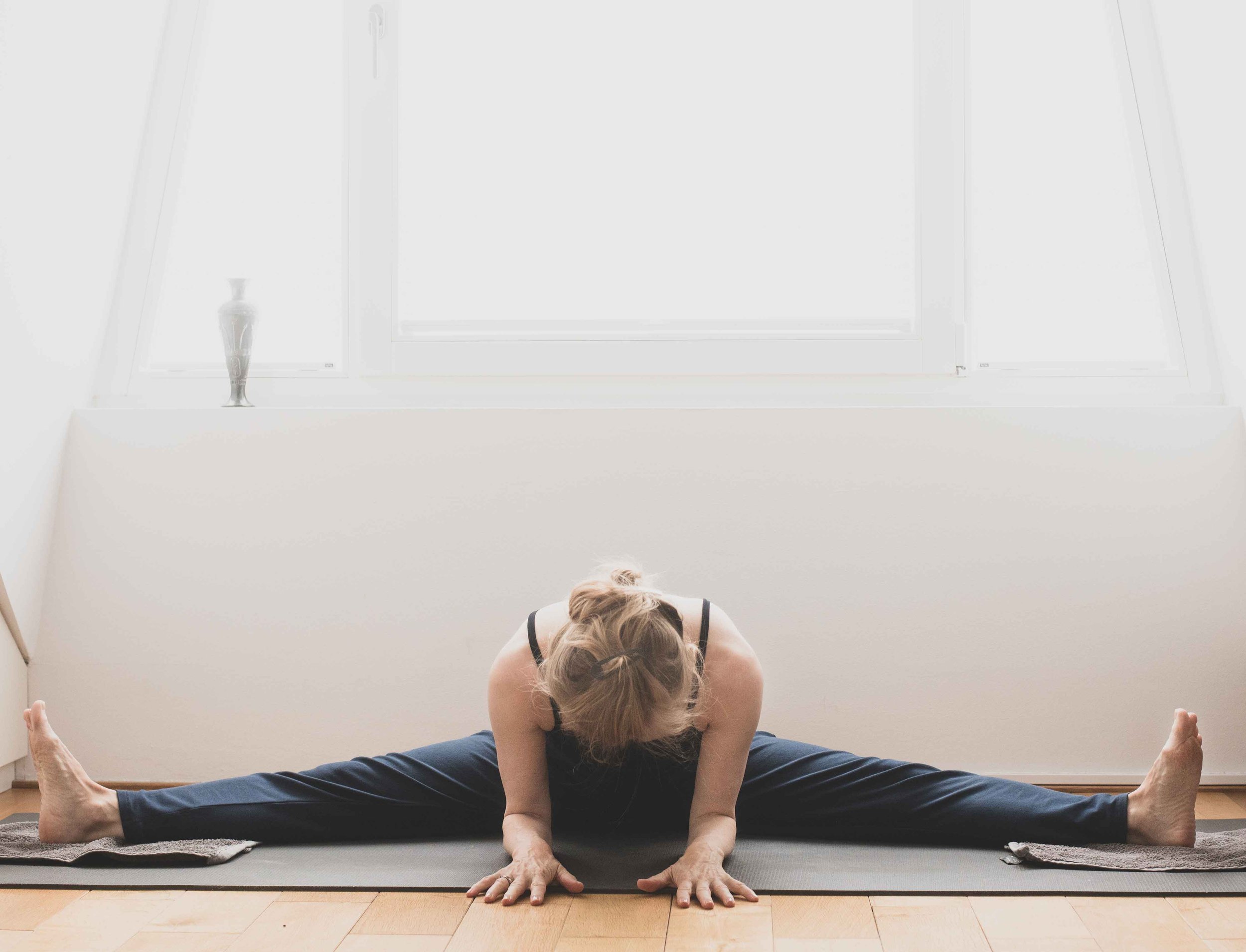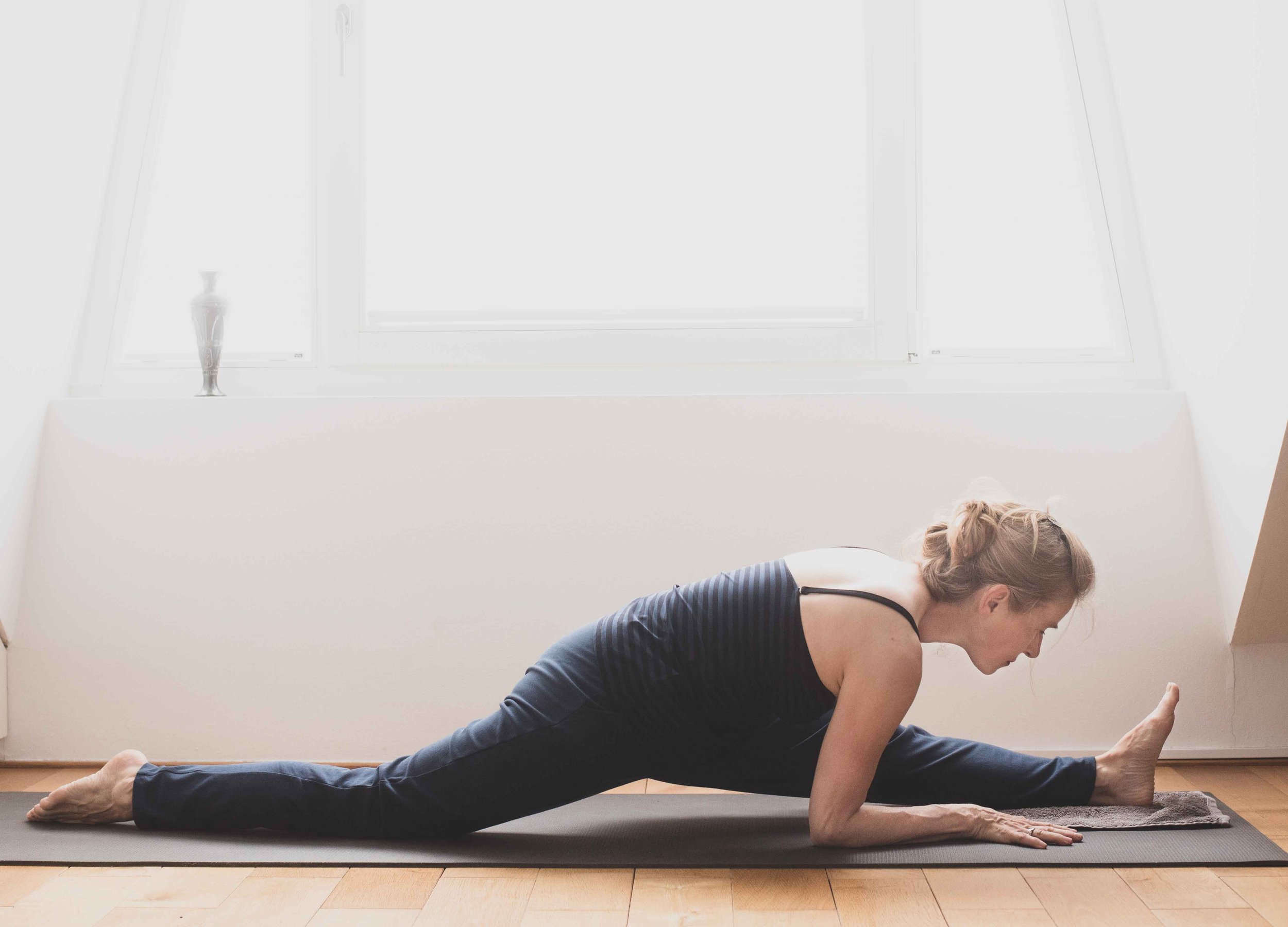For over 12 weeks I focused on learning the splits, both forward and to the side. I have gotten much better during these months. My understanding of the positions has increased. The splits are far from mastered. The process and the insights are just as important as executing a perfect position.
My insights:
1. when you practice the opportunity is there to get better. However, this does not necessarily have to happen. One can practice ineffectively or injure oneself, then the opposite of progress happens. But the opportunity is there.
2. if one does not practice, however, then one does not keep the level that one has already reached, but one becomes worse.
3. practicing is important, but understanding the positions is also important.
3.1 In hanumanasana (forward split) the hamstrings are stretched, but also the front hip muscles. You can stretch these in isolation. When performing the pose, it is important to keep in mind that the hips should remain parallel.
3.2 The most important insight in Samakonasana is that one must make a hollow back. The skeleton does not allow the legs to extend to the side without being in a hollow back.
What is the next step?
I will continue to incorporate exercises on splits into my practice. However, it will no longer be the absolute focus. The next focus will be backbends. At the end of the year I will take pictures of the splits to see how far I have come. Both positions are feasible.
Two events have slowed down my progress:
- First, I have been traveling. Then it is always difficult to practice. It is certainly possible to practice while traveling. Eliminating these interruptions would be a huge step forward.
- Unfortunately, I have also injured myself. I go to strength training regularly. There I also practice the adductors. The machine stretches the legs out to the side. With the force of the adductors, you have to squeeze the machine parts together. I had the parts swinging too far outward to have an intense stretch as well. This was probably too intense. Unfortunately, you always notice only the day after whether you have exceeded the limits too far. It will always be the case that you hurt yourself sometimes. It is a fine line between a healthy overstepping of the boundaries and being too far gone.
Hanumanasana and Samakonasana are possible I'll keep at it.



